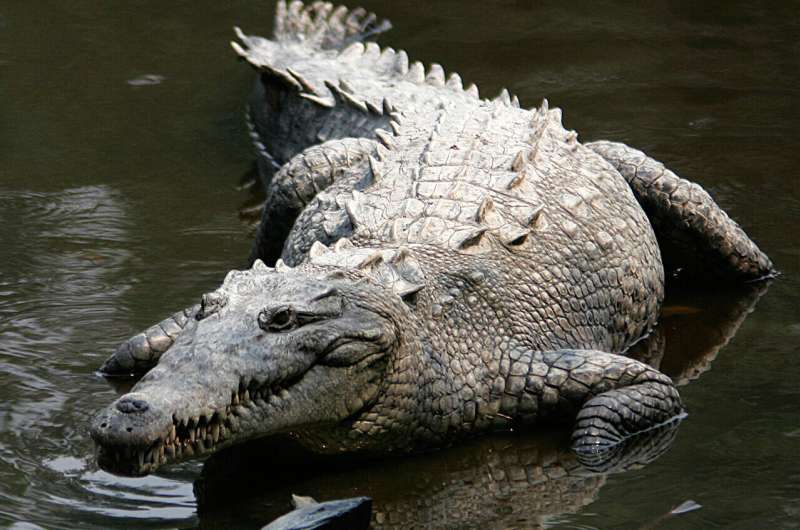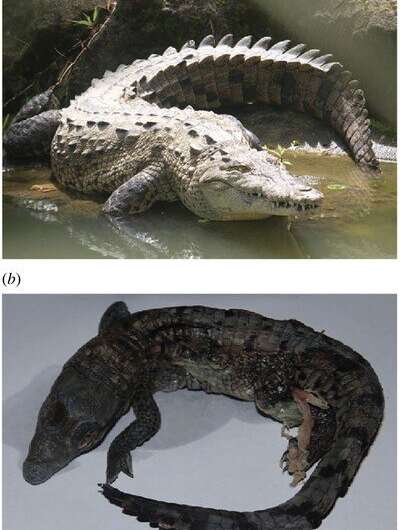June 7, 2023 report
This article has been reviewed according to Science X's editorial process and policies. Editors have highlighted the following attributes while ensuring the content's credibility:
fact-checked
peer-reviewed publication
trusted source
proofread
A documented case of a crocodile virgin birth

A team of entomologists and reptile specialists from Virginia Polytechnic Institute and State University, the Chiricahua Desert Museum, the Illinois Natural History Survey, Reptilandia Reptile Lagoon and Parque Reptilandia has documented a case of a virgin crocodile laying viable eggs. In their paper published in the journal Biology Letters, the group describes their surprise at the discovery of a clutch of eggs laid by an American crocodile who had been kept alone in an enclosure at Parque Reptilandia park in Costa Rica for 16 years prior to laying the eggs.
Prior research has found instances of "virgin birth"—a type of asexual reproduction in a species that normally reproduces sexually—in snakes, lizards, sharks and birds, but never in Crocodilia, an order that includes gharials, caimans, alligators and crocodiles. So the handlers at Parque Reptilandia were surprised to see a clutch of eggs in an enclosure hosting a single American crocodile.
Alligators are well known in North America, but crocodiles live there, too, in parts of Florida. They also live in Central and South America. They normally mate to reproduce, like most other reptiles, and lay eggs that later hatch. But now, it appears that they can reproduce asexually if need be.
The clutch of 14 eggs was discovered back in 2016. After handlers noted their arrival, they notified local specialists. The eggs were collected and taken to a lab for study, where researchers found that half of them were viable. The viable eggs were placed in an incubator with the hope of producing hatchlings.

None of the eggs produced any, unfortunately, leading the researchers to crack them open after three months to see what was going on. All of the eggs had progressed toward hatching, but only one actually resembled a fetus. A genetic study of the most advanced specimen revealed that it was nearly identical to its mother.
The research team notes that it was not surprising that none of the eggs were hatchable; eggs laid in such fashion rarely are. Now that virgin births have been documented in both birds and Crocodilia, it raises the question of whether pterosaurs and/or dinosaurs were able to do so, as well.
More information: Warren Booth et al, Discovery of facultative parthenogenesis in a new world crocodile, Biology Letters (2023). DOI: 10.1098/rsbl.2023.0129
Journal information: Biology Letters
© 2023 Science X Network




















